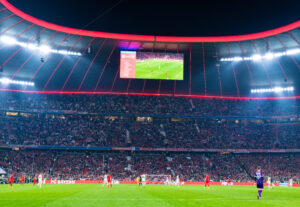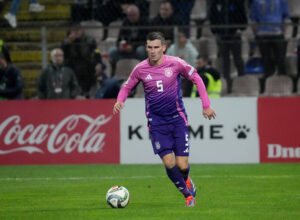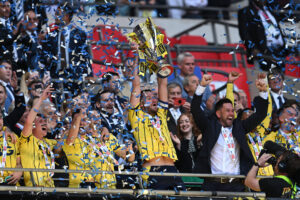Despite many critics writing off Burnley at the beginning of the season, Sean Dyche’s men find themselves not only away from the relegation zone, but comfortably in the top half of the table.
Considering that they have already played Everton, Liverpool, Manchester City, Chelsea and Tottenham all away from home (and taken eight points from those games), Burnley can be very happy with their league position, sitting in seventh. Following their impressive home form in the 2016/17 season, it would not be surprising for them to take more points from the bigger clubs in the division later in the campaign either.
Burnley: A One Dimensional Success
Goalscoring has not been a strength of Burnley’s since returning to the top flight, but they have countered this issue with a strong defensive record and frequently winning games by a one goal margin. This season, Dyche’s team has the joint third meanest defence in the league but also has only mustered 14 goals in 15 matches.
Defensive Strength
Burnley’s strong defensive record is due to a number of factors. First of all, Burnley rarely allow their opponents to shoot from close range. They have the highest percentage of their shots conceded from outside their penalty area out of all Premier League teams. In other words, opponents resort to attempts from outside the box, as they are unable to get shots away from any closer due to a deep defensive line.
Burnley have the highest number of blocks per game at 6.1, which sits significantly above the second-ranked team, Brighton, with 4.6. So not only do they restrict teams to long shots, but they also often prevent the ball from reaching their goalkeeper. The opposition cannot even cross the ball effectively against Burnley; Dyche’s squad have the highest amount of aerial duels won per game in the league.
On the topic of their goalkeeper, it cannot be ignored that replacement Nick Pope is in terrific form since he came in for the injured Tom Heaton. Of goalkeepers to make over ten appearances, Pope has the second highest amount of saves per game (behind Lukasz Fabianski). Without a strong keeper to support the defensive work put in by the back four, Burnley would not run as tight a ship as they do.
Low-Risk Style
Burnley operate a no-nonsense style of defending. They have the second most clearances and the highest amount of long balls in the league. This results in a lack of defensive errors as the team rarely allow themselves to lose possession in the defensive third simply because they don’t keep the ball there. Consequently, only Leicester have conceded fewer errors leading directly to goals than Burnley
Dyche does not even encourage his players to take on the opposition with runs. Burnley have the second lowest number of dribbles attempted per match in England’s top division, with 6.1 per game. Only Everton sit below them with 5.9. Once again, this is a tactic encouraged to limit the number of times Burnley lose the ball cheaply in key areas and expose themselves to dangerous attacks.
Simple But Effective
Looking to the attacking side of Burnley, their game plan is quite straightforward. Dyche instructs his men to build from wide areas and cross the ball. Deliveries from talented players such as Robbie Brady and Matt Lowton are aimed at either of Burnley’s strong centre-forwards, Chris Wood and Sam Vokes. With the supporting central midfielders breaking into the attack, the striker will have opportunities to bring them into play with knock-downs. Only Newcastle have a higher percentage of their goals assisted from crosses.
Although Burnley rank 19th for possession in the Premier League with a meagre 43.7%, they have the 13th most shots in the league. Despite the fact that they don’t keep hold of the ball for very long, when they do have it, Burnley look to be as efficient as possible.
The concern for the team in attack is that if they lose their key players to injury they don’t have a second game plan. André Gray represented a different type of striker, but the Englishman left Turf Moor for Watford in the summer. Now the two main striking options, Wood and Vokes, are very similar centre-forwards and play to Burnley’s long ball strategy.
Robbie Brady has recently been ruled out with a serious injury. Without his quality delivery from set pieces and wide areas, the strikers won’t receive as many goalscoring opportunities. Brady’s absence could really affect the team, and Dyche will be hoping his other first team players can stay fit.
Verdict
Fans at Turf Moor can be hopeful of a top half finish given that their team has already played the majority of their away games against the bigger teams in the division. However, Dyche will have to ensure that his team can continue to pick up points on the road as it was such an issue for them last campaign.
Don’t expect Burnley’s tactics to change anytime soon, given the success they have brought so far this season. Although Dyche has no plan B, if his first team remains the same through 2017/18, plan A might just be good enough.
Main Photo






